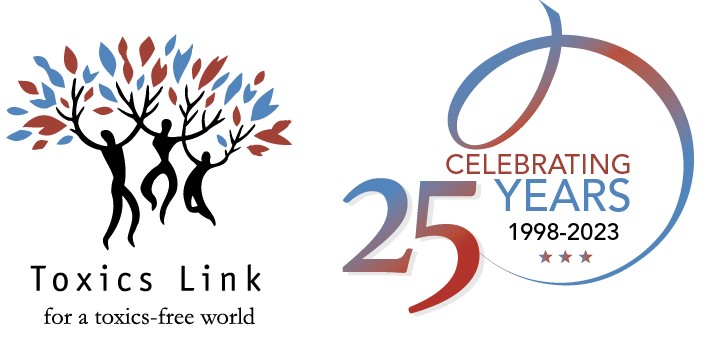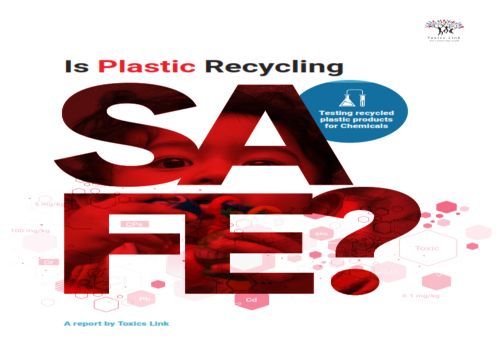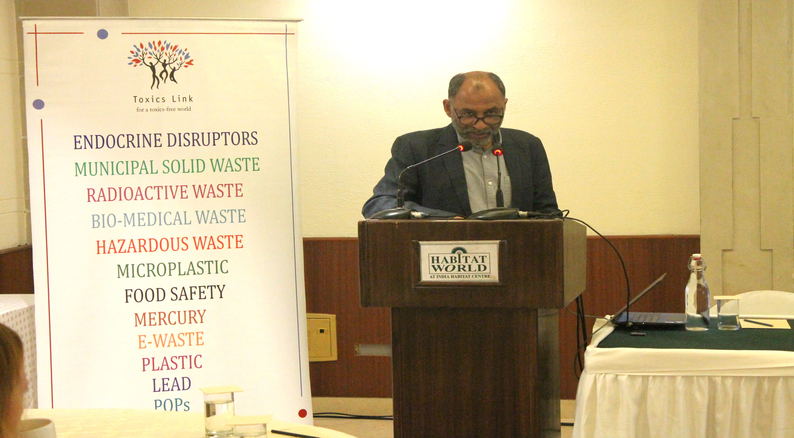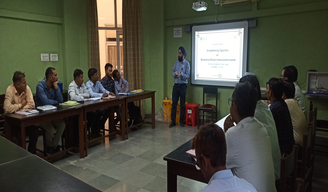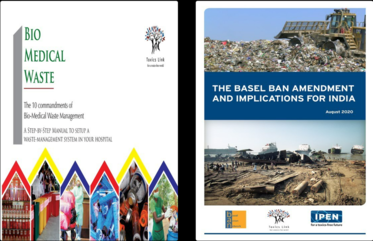INTERVENTION
Toxics Link has been working continuously on the issue of mercury since 2003, starting with the publication of the report “Mercury in India, Toxic Pathways” for the UNEP based global mercury assessment. Since then it has been working extensively both in India as well as with international partners to help reduce use of mercury in various sectors like health care and lighting, to raise public awareness, and to conduct research about its impacts on food (fish, water) and the environment. Toxics Link was part of negotiation process in INC and has worked closely with Ministry of Environment and Central Pollution Control Board on many occasions.
Toxics Link’s intervention on mercury is largely divided in two categories – a) Research & Advocacy and b) Training & Capacity Building. The studies conducted on mercury in health care during all these years majorly covered the health care instruments and dental amalgam.
- a) Research & Advocacy
- Mercury in health care instruments:
Fever thermometers and sphygmomanometers are used in all health care settings across the globe. Elemental mercury (Hg80), which is used in these instruments, is in liquid state at room temperature and pressure. There is a high risk of breakage of these instruments leading to the release of mercury, because in both the cases the mercury columns are made of glass.
Toxics Link conducted primary and secondary research through engaging with different stakeholders. The first study report ‘Lurking Menace’ was published in the year 2004 which depicted that a medium sized hospital (300-350 bedded) with a dental wing generates approximately 3 kg of mercury annually.
In continuation to this study, another research was conducted in 2007 with a major focus on the presence of mercury in hospital indoor air, clinics and labs. It was found that the doctors, nurses, other health care workers and patients were significantly exposed to elemental mercury. The details of the study is available at “Mercury in Hospital Indoor Air ”.
Further, Toxics Link conducted another study on presence of mercury in health care instruments (Sphygmomanometers and thermometers.) and came up with two reports “Moving towards mercury free health care ” in 2009 and “Estimation of mercury usage and release from health care instruments in India ” in 2011. According to these studies, the total amount of estimated mercury released through health care instruments in India is eight tons in which the share of mercury in thermometers and sphygmomanometers is 31 percent and 69 percent respectively.
Our latest report in 2014 titled “Mercury free India – Right Choices ” was an effort to suggest a possible roadmap for mercury reduction and its ultimate elimination in India. This report mainly focused on phasing out mercury in India as per the agreement signed with the globally binding treaty “Minamata Convention”.
- Mercury in dental amalgams
The second highest consumer of mercury in the health care sector after medical instruments is dental restorations. Dental amalgam contains about 50% mercury, as well as other toxic metals such as tin, copper, nickel, palladium, etc.
Mercury based dental fillings has prominent impacts on the health of people and the mercury emissions caused due to cremation of such people also has serious effects on the environment. The estimated annual use of mercury in dental sector in India stands around 65 tons, where 49 tons gets into cavities and 16.2 tons is mostly thrown into the environment as non-contact amalgam. ( Source Mercury_in_Our_Mouth)
Toxics Link conducted research on this issue and published a report in the year 2012 titled, ‘Mercury in our mouth’. According to this report there are two types of amalgam- a. Contact amalgam and b. Non-contact amalgam. The disposal of amalgam depends on how it was used during dental treatment. The excess amalgam that is unused after a tooth filling is called ‘non-contact’ amalgam, it was never placed into a tooth and was never in contact with any human tissue. As much as up to 15-50% of the amalgam may remain unused after the use. Contact amalgam is amalgam that has been in contact with human teeth or tissue. Processes like replacing amalgam fillings, polishing a fresh amalgam filling to remove the excess amalgam can generate contact amalgam.
To further substantiate this study, Toxics Link tried to evaluate the situation of dental sector for its preparedness to deal with the issues of mercury pollution. Recently, a survey was conducted among dental practitioners covering the states of Delhi, Uttar Pradesh, Haryana, Karnataka & Tamil Nadu. A total of 24 health care facilities were covered (including dental colleges and hospitals with a dental wing). The survey was intended to assess the various aspects of dental amalgam including-
- The acceptability and availability of mercury alternates on the ground
- Policy level changes required by the Indian Dental sector to get synchronized with the Minamata Treaty
- Preparedness of this sector to deal with mercury pollution
- Emerging trends in this sector
The study revealed that there is a considerable shift in the dental filling material used in the country. Increasingly people have moved away from mercury fillings to other composites, owing to aesthetic reasons. Reduced cost discrepancy between different materials, increased life and stability of alternate fillings and increased awareness about mercury toxicity has all resulted towards this shift.
- b) Training & Capacity Building
Following the secondary research various workshops were also conducted in association with local NGOs in the state of Gujarat, Meghalaya, Assam, Manipur, Punjab (Amritsar, Ludhiana), Tamil Nadu, Kerala and Andhra Pradesh on the issue of phasing out mercury from their respective health care sectors. The SPCBs, Hospital Managements, Doctors, Nurses and other stakeholders like the Indian Medical Association (IMA) and its state chapters were also actively involved in these workshops.
Due to our interventions Manipur, Punjab, Delhi, Hubli Dharwad Municipal Corporation (HDMC) and Ministry of Health and Family Welfare under the Central Government Health Scheme (CGHS) issued mercury phase out orders. In Delhi Toxics Link convinced the Central Pollution Control Board (CPCB) to come up with mercury phase out orders.
Trainings on mercury toxicity awareness were conducted for doctors, administrators, nurses and other class IV employees in health care facilities of 16 states in India till date. Our partner NGOs trained hospitals to become models in the management of mercury in their respective states.
Major Achievements
- Hospitals in Delhi, both government and private, shifted from mercury-based thermometers and sphygmomanometers to other alternatives
- Delhi Government issued instructions for procurement of only non-mercury measuring instruments for the hospitals
- States of Punjab and Manipur issued instructions for phasing out of mercury-based health care instruments. Under the similar kind of intervention, a mercury phase out order was passed by HDMC for all the health care facilities under them.
- CPCB issued guidelines for storage of surplus mercury-based measuring instruments.
